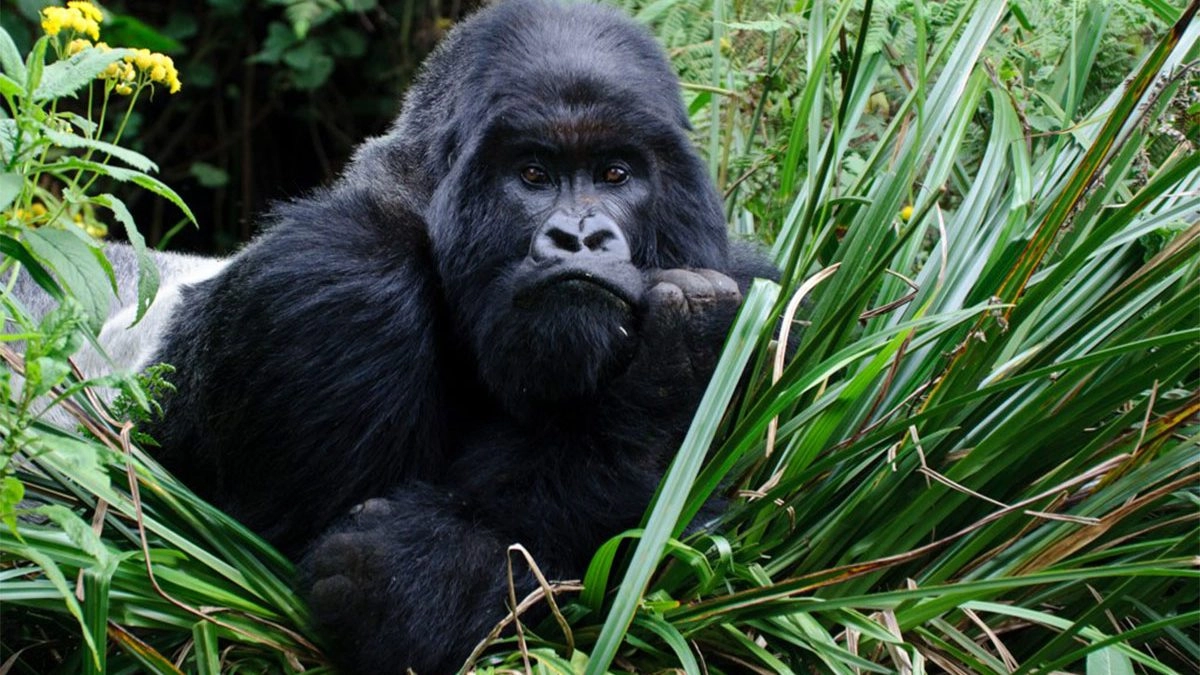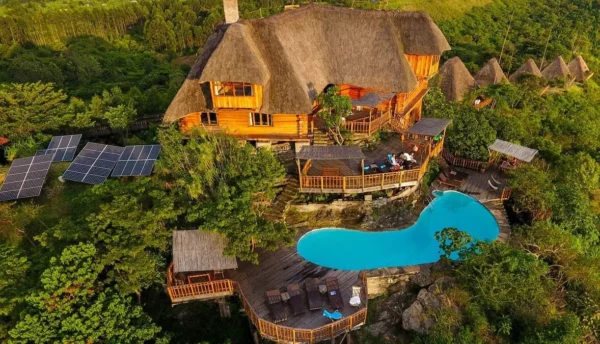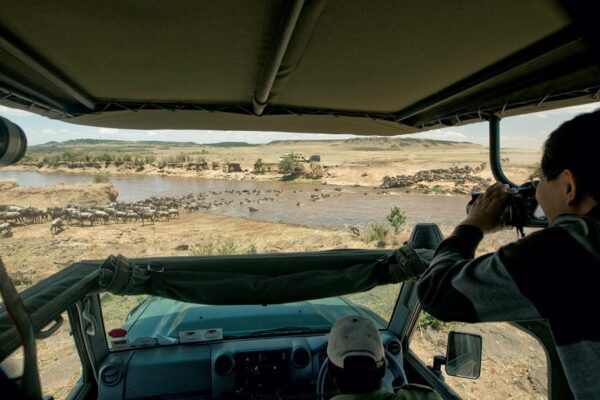
How Old Do You Have to Be to Gorilla Trek in Uganda?
July 2, 2025
What Is Uganda Gorilla Trekking and How Does It Differ from Game Drive Safaris?
July 3, 2025How Long Does It Take for a Chimpanzee to Walk?
When travelers embark on a Uganda safari or a Rwanda safari, one frequently asked question is, “How long does it take for a chimpanzee to walk?” This curiosity isn’t just about factual curiosity—it plays a key role in preparing for primate trekking, pacing expectations during Chimpanzee Tracking, and optimizing itineraries that often include iconic experiences like Gorilla Trekking in both Uganda and Rwanda. At Renai Safaris, we believe that understanding the walking habits of chimpanzees enhances your wildlife safari adventure—from your arrival to the final cultural visit—and elevates the experience to something genuinely immersive and memorable.
Chimpanzee trekking offers a unique doorway into observing our closest living relatives in their natural environment. Whether your safari is centered on a Rwanda Tour or includes a tallied combo of Uganda Gorilla Trekking and Chimpanzee Tracking, understanding how far and how fast chimpanzees move each day helps you prepare physically, mentally, and emotionally. In this comprehensive article, we’ll unpack typical walking distances, pace variations, environmental influences, and how this knowledge furthers your appreciation of primate behavior. Along the way, you’ll see how to combine chimp trekking with gorilla trekking and enrich your journey with local cultural experiences.
Chimpanzee Daily Walk: How Long Does It Take for a Chimpanzee to Walk?
Chimpanzees are naturally mobile throughout the day, moving between feeding sites, engaging socially, and resting. On average, wild chimpanzees walk about 4–6 kilometers (2.5–3.7 miles) per day—typically over 4 to 6 hours. Yet this movement isn’t a constant stride; their pace varies significantly as they pause to forage for fruit, leaves, seeds, and insects, groom one another, or simply rest.
When on a Chimpanzee Tracking expedition, trekkers follow this rhythm, which is neither rushed nor leisurely. Understanding How long does it take for a chimpanzee to walk? prepares trekkers for a natural, unhurried pace—critical for those also planning to combine a Gorilla Trekking Rwanda or Uganda Gorilla Trekking experience. Gorilla treks tend to be shorter in distance but may involve tougher terrain and steeper ascents. Knowing the differences in trekking demands ensures balanced, energy-savvy safari planning, whether you’re on a Uganda safari, Rwanda safari, or multi-nation Rwanda Tour.
Influencing Factors: Environment & Behavior
Terrain and Ecosystem
Chimpanzee movement patterns heavily depend on their habitat. In Uganda’s Kibale Forest—a prime spot for Chimpanzee Tracking—the terrain is gently rolling and dense with canopy cover, facilitating moderate-paced walking. Conversely, in Rwanda’s Nyungwe Forest, where dense undergrowth and steeper slopes prevail, chimpanzees move a bit slower. Trekking here requires more time and stamina, elevating the question “How long does it take for a chimpanzee to walk?” to strategic importance when combining with gorilla experiences.
Food Availability and Seasonality
Chimpanzees adjust their daily walking distance based on the availability of food. During periods of fruit abundance, their daily journeys may shorten, whereas lean seasons force them to travel farther and longer. For travellers on a wildlife safari, this means trek durations vary seasonally—knowing How long does it take for a chimpanzee to walk? helps set expectations and plan days following hard treks with lighter, culturally rich activities like visiting local craft markets or traditional dance performances.
Trekking Logistics: How Long Does It Take for a Chimpanzee to Walk? on Safari
A typical Chimpanzee Tracking safari begins early—usually around 7–8 AM—to catch chimpanzees during active periods. Groups may trek several kilometers to locate chimpanzee communities, which can take 1–3 hours. Once found, visitors spend about one hour observing before returning to camp. Including return journeys and briefings, a full safari experience spans roughly 3 to 6 hours, closely tied to chimpanzee walking habits.
By comprehending How long does it take for a chimpanzee to walk?, guests can wisely plan key logistics: choosing a lodge near the forest to minimize travel time, scheduling complimentary cultural visits in the afternoon, or combining the track with a half-day game drive on their Uganda safari or Rwanda Tour. For families, knowing pace and time helps manage group energy levels and attention spans—especially relevant to deciding whether to include Uganda Gorilla Trekking after a trek.
Pairing with Gorilla Trekking: A Full-Primates Safari
Combining Chimpanzee Tracking and Uganda Gorilla Trekking (or Gorilla Trekking Rwanda) provides a holistic primate safari, showcasing contrasting trek styles and primate behaviors. While chimpanzees walk 4–6 km daily at a leisurely pace through varied terrain, mountain gorillas tend to occupy smaller ranges and may require shorter but more challenging uphill routes.
This dual experience not only satisfies wildlife curiosity but supports conservation across multiple ecosystems. When planning both, it’s essential to gauge pacing: opt for Chimpanzee Tracking first, when energy is fresh, and follow with gorilla trekking, which can be more physically demanding. Understanding How long does it take for a chimpanzee to walk? equips adventurers to pace meals, rest days, and even community walks showcasing local culture, such as coffee cooperatives or traditional music.
Cultural Immersion: Beyond the Trek
Indigenous Communities & Traditional Practices
Experiencing chimpanzee walking routes naturally leads to cultural immersions—often underutilized in conventional safari itineraries. Local communities near primate habitats, such as the Batwa in Uganda or artisans in Rwanda, hold centuries of ecological knowledge about chimpanzees. Visiting their forest-edge villages after a morning trek brings balance to the journey, grounding it in real-world heritage and promoting meaningful exchanges.
Conservation Through Culture
These cultural interactions carry more than curiosity—they drive conservation. Revenue from treks is often directed into community projects, from schools to clean-water programs. For families, this means that following a morning trek with a craft workshop or traditional dance session becomes part of giving back, reinforcing the ethical underpinnings of sustainable wildlife tourism.
Preparing for Your Chimpanzee Trek: Gear, Fitness & Etiquette
What to Wear and Bring
Chimpanzee treks demand preparatory thought. Expect 3–6 hour outings where chimpanzees walk leisurely through dense forests, so supportive footwear, lightweight long sleeves, a rain jacket, water, and snacks are essential. Binoculars help observe from a safe distance—linking trekkers gently to behavioral patterns.
Physical Readiness
Trekking 4–6 km at a chimpanzee’s pace feels gentler than hiking your own route—but it’s still 3–4 hours in the forest. Conditioning hikes prior to departure pay dividends. Templates that account for How long does it take for a chimpanzee to walk? help ensure trekkers have the stamina to enjoy both this and subsequent Gorilla Trekking Rwanda with energy and enthusiasm.
Ethical Etiquette
Planners should prioritize respect: adhere to guide instructions, maintain distance, avoid noise, wear masks when required, and refrain from littering. These strenuous yet responsible behaviours underline the value of understanding how chimpanzees walk—ensuring every trek respects primate wellbeing.
Seasonality & Planning: When Trekking Meets Timing
Chimpanzee movement patterns—and therefore trek durations—are influenced by seasons. Drier months (June–September, December–February) are ideal for trekking as trails are less muddy and chimpanzees more visible. Although daily walking distances remain similar, trekking time may reduce during these peaks when fruit is plentiful. By knowing How long does it take for a chimpanzee to walk?, travel planners can suggest trip dates that align trek difficulty and conservation cycles, improving chances to observe and enjoy both chimpanzees and gorillas during wart, active periods.
Final Thoughts: How Long Does It Take for a Chimpanzee to Walk? as a Safari Strategy
To answer definitively: chimpanzees typically spend about 4–6 hours walking 4–6 km daily, broken into strolls, foraging stops, and social breaks. Grasping How long does it take for a chimpanzee to walk? is crucial to designing a seamless wildlife safari, whether your focus is Uganda or Rwanda or you’re reading to blend Chimpanzee Tracking with Uganda Gorilla Trekking on a full primate safari.
Renai Safaris crafts balanced itineraries blending primate treks with cultural immersion, seasonal timing, and conservation-minded lodge stays. Let us help you design a safari where scientific insight, indigenous heritage, and breathtaking landscape combine—anchored in the simple, yet telling question of how chimpanzees walk. Your adventure begins with curiosity, and care for their journey ensures an unforgettable experience—for both you and the primates you come to know.




